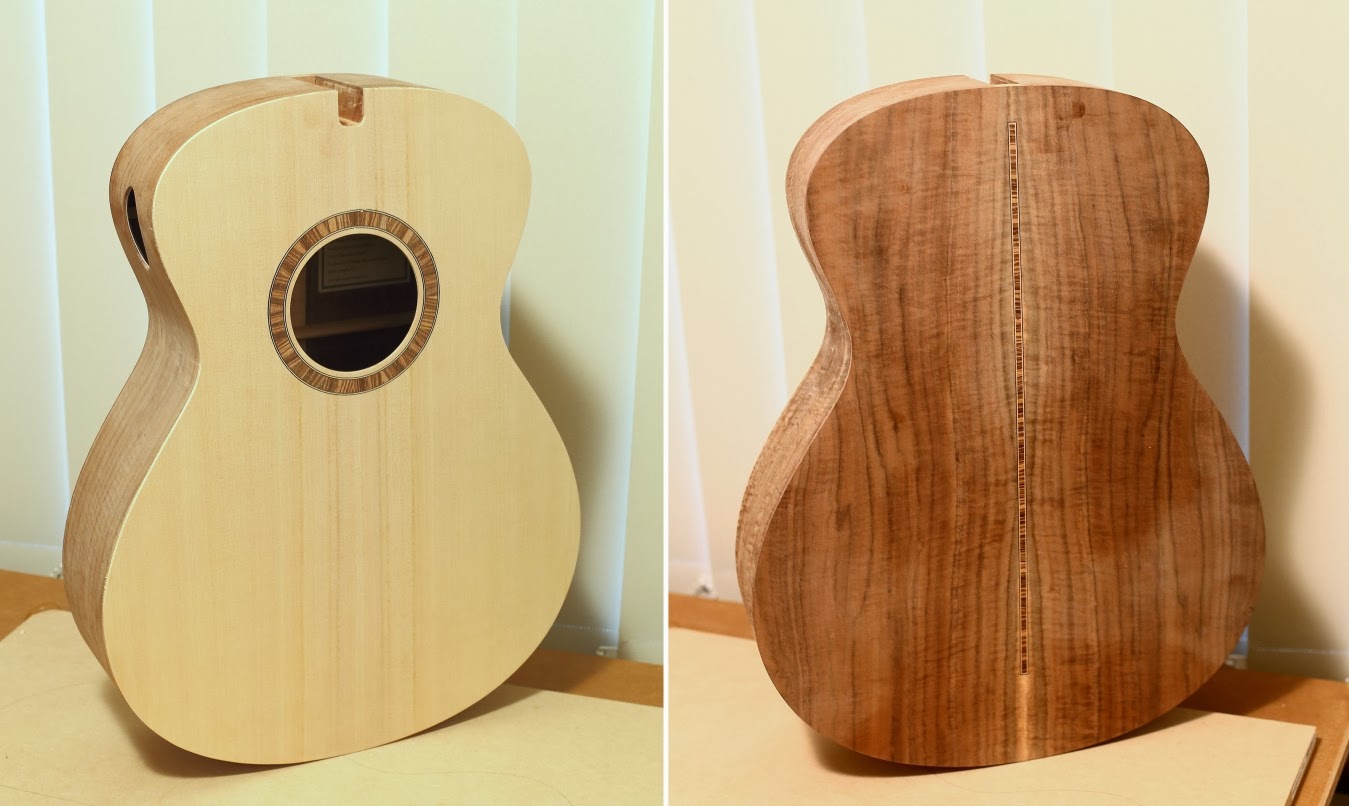I've been keen to try a new approach where finishing necks is concerned, and have opted to experiment with some oil finish products on a couple of the necks I'm currently constructing. Gloss finishes certainly look classy, but many players express a preference for a matte or satin neck finish that doesn't "grab", as some gloss finishes are prone to do.
Like many other aspiring builders, I finished my first couple of guitars with Birchwood Casey's Tru-Oil. It's easy to apply, relatively benign, and seems impervious to moisture once cured. What's more, it's readily available locally - always a plus for someone like me, living in far-away Australia. I recall reading of tests that showed it doesn't penetrate the wood surface deeply, which adds to its appeal for those builders unwilling to make the leap into sprayed or french polished finishes.
Despite Tru-Oil's attractions, I've recently investigated some alternatives and purchased small quantities of the products pictured above. A local gunsmith told me preferred the Livos product rather than Tru-Oil, and I've read reports by builders in the solid-body electric world who have used the Osmo product with great success. I guess it's best that I find out for myself!
The manufacturers' web sites describe how each of these products penetrate the wood and dry within it, rather than on top of it as Tru-Oil does. If I was finishing the body of an instrument, this would ring alarm bells - particularly where the soundboard is involved - but where necks are concerned, I'm not at all worried about the oil penetrating the wood surface; in fact, to my mind, this characteristic could offer advantages. Although I'm not expecting significantly different outcomes, I plan on trialing each of the two finishes to satisfy my curiosity once and for all.
As a nod to convention, I'll spray a gloss finish on the headstock face and the heel cap before I fine-sand, then oil, the remainder of the neck.
The manufacturers' web sites describe how each of these products penetrate the wood and dry within it, rather than on top of it as Tru-Oil does. If I was finishing the body of an instrument, this would ring alarm bells - particularly where the soundboard is involved - but where necks are concerned, I'm not at all worried about the oil penetrating the wood surface; in fact, to my mind, this characteristic could offer advantages. Although I'm not expecting significantly different outcomes, I plan on trialing each of the two finishes to satisfy my curiosity once and for all.
As a nod to convention, I'll spray a gloss finish on the headstock face and the heel cap before I fine-sand, then oil, the remainder of the neck.





















































